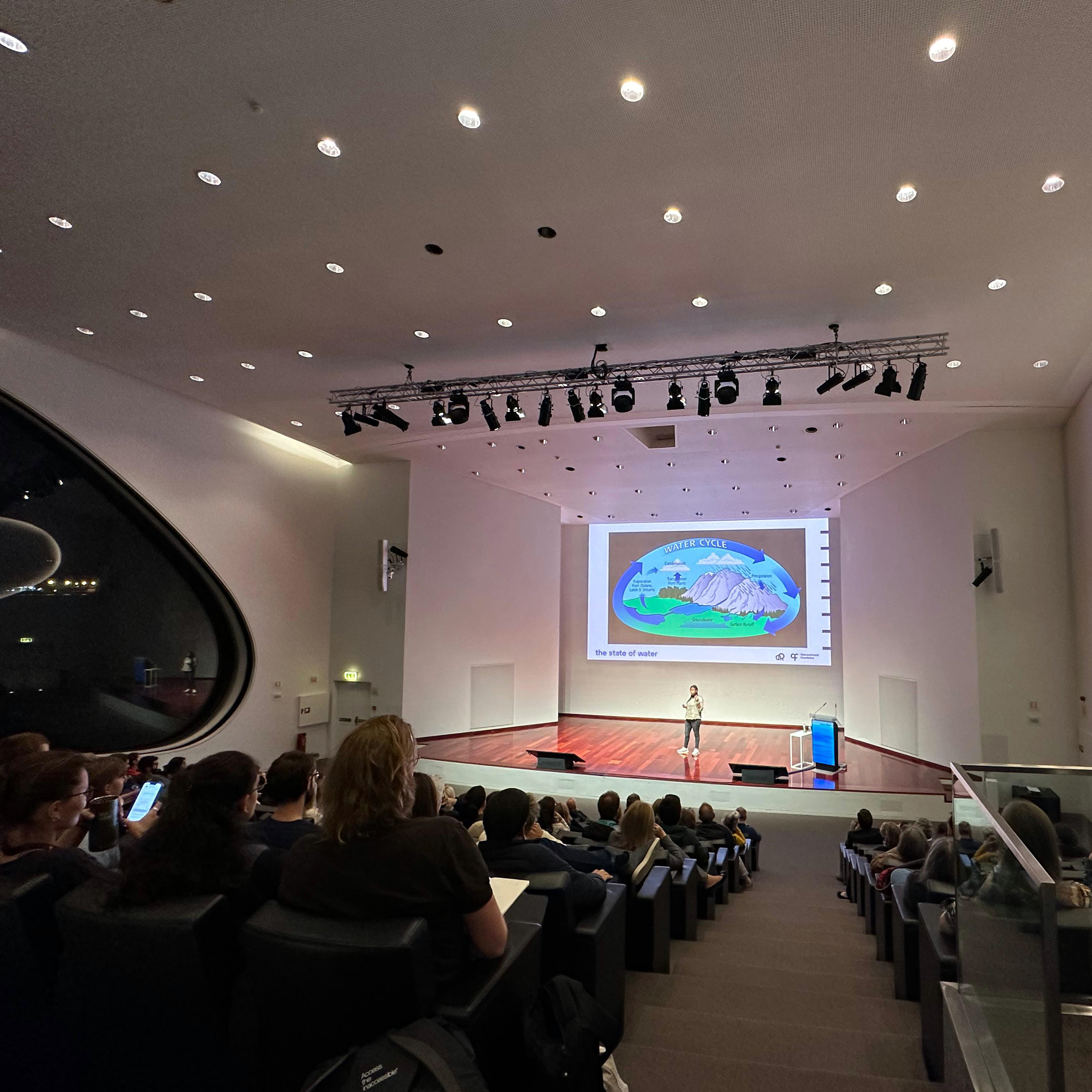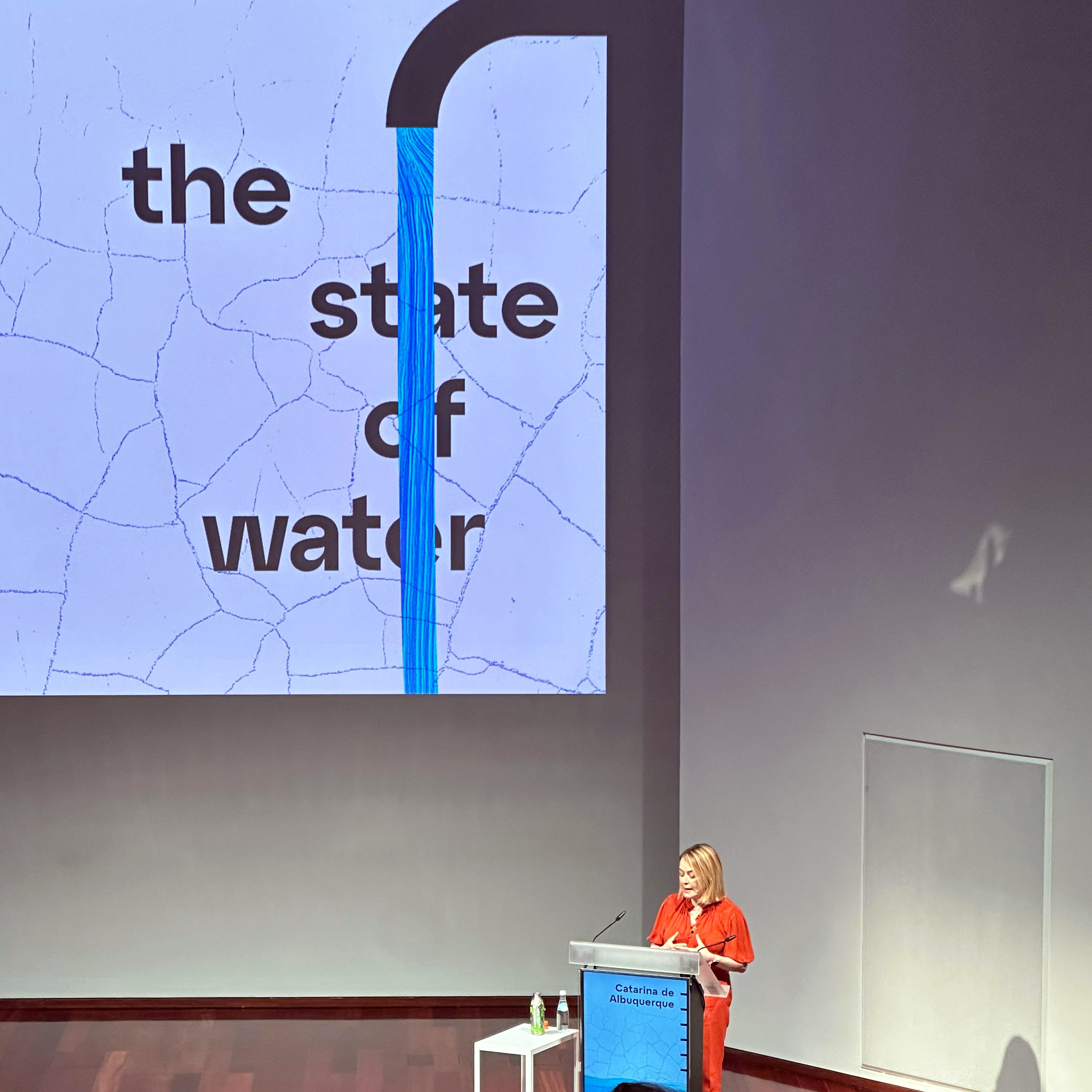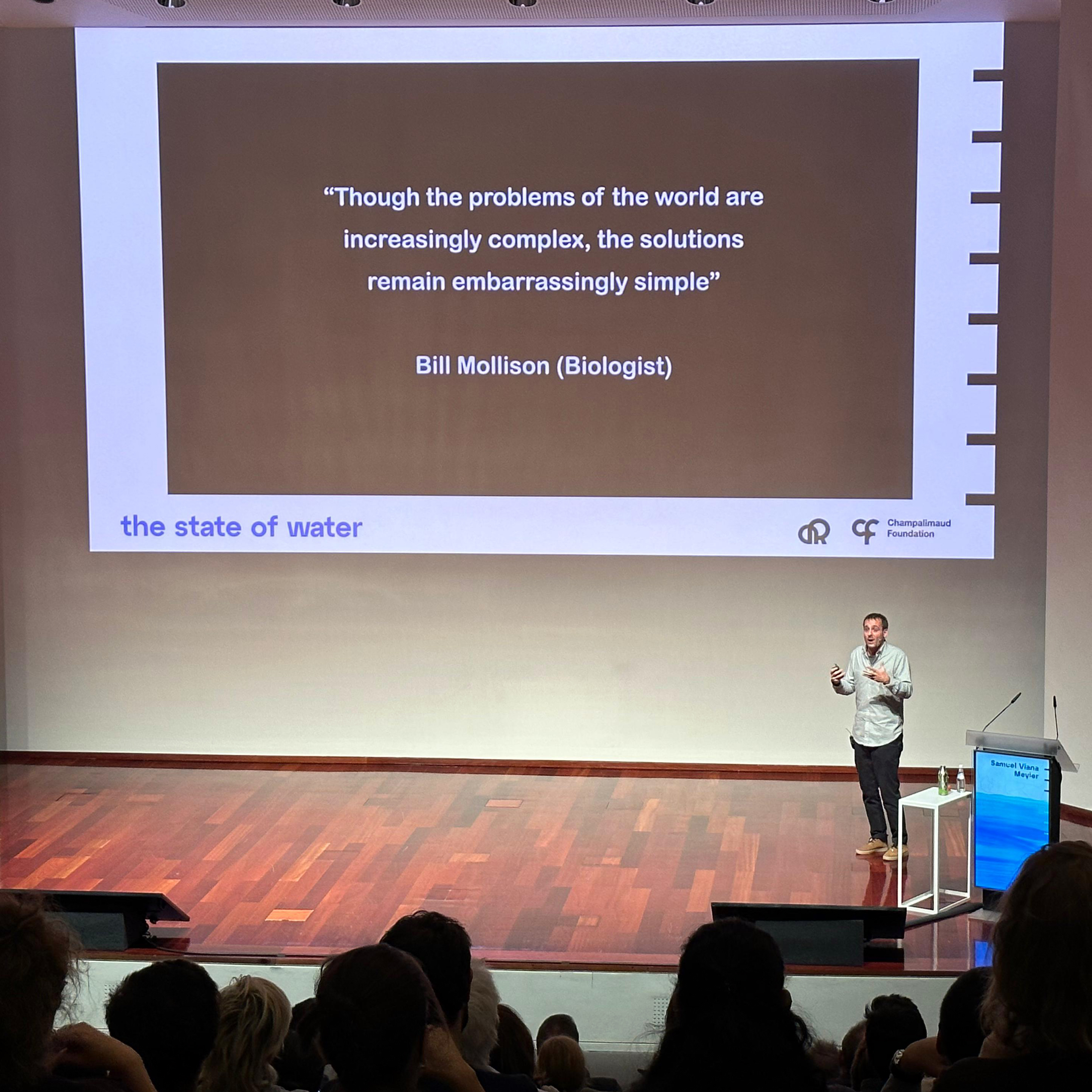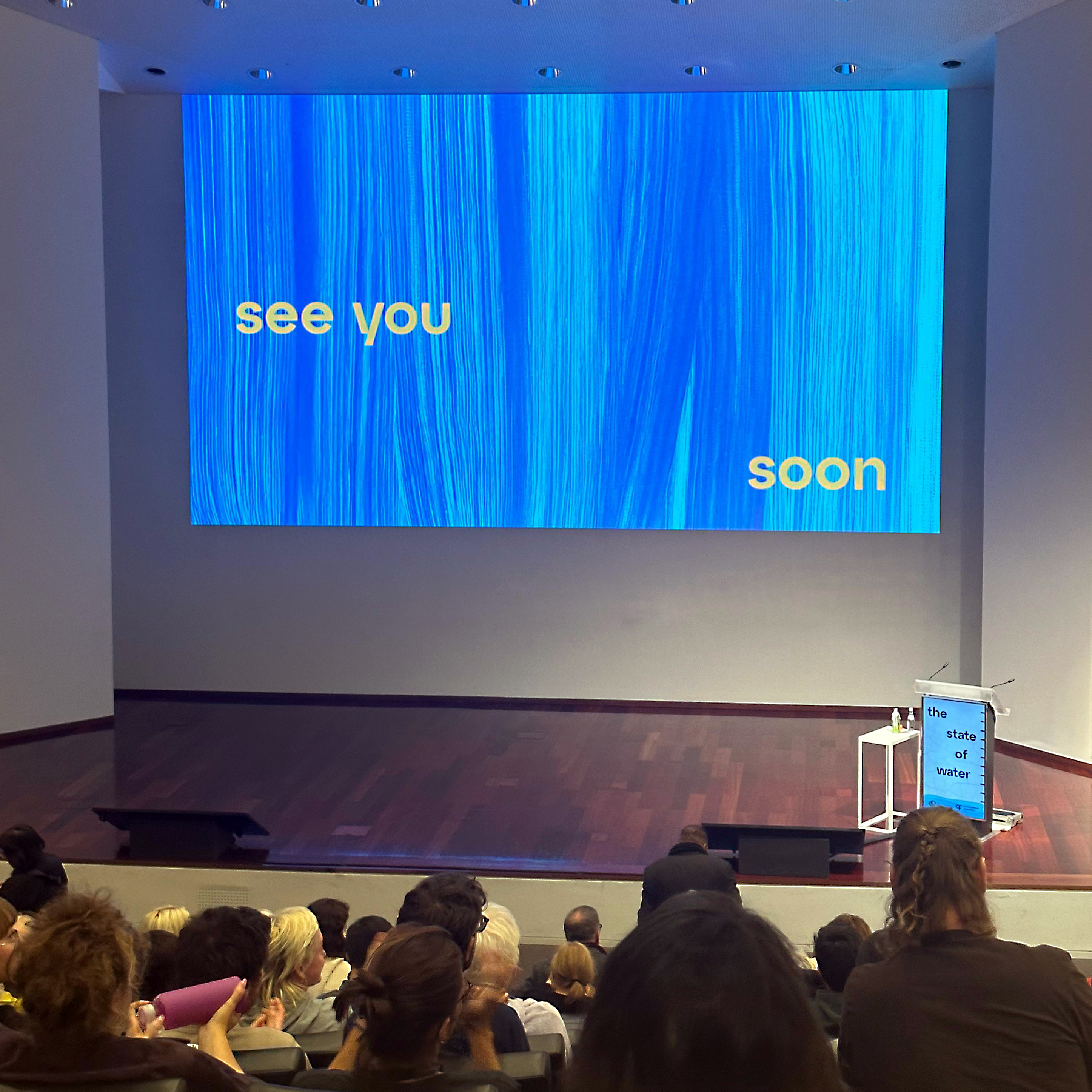Water is the matrix of our planet. Not only human societies, but all forms of life, are dependent on water. And while we still take its availability largely for granted, it is a resource which is becoming scarcer by the minute owing to climate change, intensive agriculture, and access inequalities to water for drinking, cooking, and personal hygiene.
Water covers 70% of the surface of the Earth. The oceans and seas represent 97.5% of the total water resources, the remaining 2.5% of which is fresh water. Of this small amount, only a tiny percentage is available as water that we can immediately access and consume.
The last of the 2024 Ar Events at the Champalimaud Foundation (CF), which took place in November, was dedicated to “The State of Water”. Under the guidance of Laura Silva, a research technician at the CF’s Systems Neuroscience Lab, the event started with a short intro to the topic, followed by a 30-minute movie titled “This is a story about water”, directed by Samuel Viana, from the Department of Performing Arts at the University of Évora, and American Ireland-based filmmaker Kathleen Harris.
This was followed by talks by Samuel Viana and by Catarina de Albuquerque, leading advocate for the rights to water and sanitation, currently serving as the CEO of the Sanitation and Water for All (a global partnership of governments, donors, and civil society organisations).
Recycled dinosaur's urine
Not everyone may be aware of this, said Laura Silva, but “the first water that appeared on Earth is virtually the same one that we have today. The water that we have now and the water that the first beings that appeared on this planet had, as well as the water that we will have in the foreseeable future, is the same.”
Later in the evening, Catarina de Albuquerque would humourously add that, when she speaks with children, she tells them that today, “we drink recycled dinosaur's urine”.
This is due to nature’s own device for replenishing the fresh water reservoirs through an infinite recycling process called the water cycle. “Water evaporates mainly from the ocean, it condensates into clouds in the atmosphere, and when the clouds are too heavy with water, it precipitates back to Earth in the form of rain, snow, or hail”, Laura Silva explained. “When back on Earth, the same water runs off and replenishes rivers, lakes, and the ocean, or it can infiltrate in the ground, refilling the groundwater reservoirs.”
“This is nature's way of transforming salty water into fresh water, the water that all beings on land can consume”, she concluded.
Living with water scarcity
Samuel Viana’s and Kathleen Harris’ documentary is a close-up view into the daily lives of people in southwestern Alentejo, around the Santa Clara dam near Odemira. These populations are suffering from water scarcity as greenhouse intensive agriculture by an american company, on coastal Eastern Alentejo – and on a protected natural park – are increasingly deriving water from the dam (originally built to irrigate inland agriculture) to grow avocados and small red fruits for export.
After the viewing, it was Samuel Viana’s turn to take the stage. “Before I moved to the Alentejo, I didn't really think about water”, he said. “Water was something that kind of magically appeared in the taps. But when I moved to the Alentejo, I began to understand how water is actually very political and how water management is both a catalyst for and a reflection of some of the inequalities in our society.”
One lesson he learned from shooting the documentary, Samuel Viana added, was that “we have a decreasing water supply that we're literally exporting in the shape of avocados and berries to often water-rich northern countries”.
The filmmaker also reflected that, in the process, “the migrant population that isn't integrated in our society becomes vulnerable to exploitation”.
As a local interviewee summed up in the movie: “We have this huge problem of the Santa Clara dam channeling water to the greenhouses inside a natural park. And there's all these migrants being exploited. This whole thing is so absurd.” “(...) We are just being too kind, allowing all these big multinationals coming and exploiting and destroying and overusing natural resources, he went on. “I’m really starting to think this is total madness. Rivers are vanishing and they are being misused, mistreated. (...) Water is not an economic resource. Water is life and water is for everyone.”
As for Samuel Viana, it is obvious for him that the problem of water scarcity and misuse, compounded by climate change, cannot be efficiently and seriously addressed without political will and the release of public funding. “I'm hopeful that we can coordinate to solve this collective problem”, he concluded.
An alarming state
“What is the state of water?”, then asked Catarina de Albuquerque. “I can tell you that the state of water is alarming – and we saw it in Sam's documentary.”
Almost fifteen years ago, she reminded the audience, water and sanitation were recognised as human rights by the United Nations General Assembly. Yet, in marginalised communities around the world, women still have to walk miles to fetch water, young girls cannot attend school when they have their periods for lack of proper sanitation – raising fundamental questions of gender equality. And indigenous people struggle for access to water.
As people were registering for the event, the organisers had asked them some questions. One of them was how many people they thought were affected by water scarcity. According to the WWF (World Wide Fund), approximately 2.7 billion people face water scarcity for at least a month a year, and this number may increase to two-thirds of the world in 2025. Our audience was mostly split between those selecting the closest answer of three billion people being impacted by water scarcity and those that chose one billion (see fig.1). Notably, the younger the responder the more likely they were to underestimate the scale of the water crisis.

fig.1
“The climate crisis is at its core a water crisis”, Catarina de Albuquerque continued. “The rising temperatures, the erratic rainfall, overwhelming floods, severe droughts are creating immense strain on water resources.”
The audience shared this position: when previously asked what they thought has contributed most to water scarcity – climate change, globalisation or increased global population – most of them considered climate change to be a leading cause for water scarcity (see fig.2).
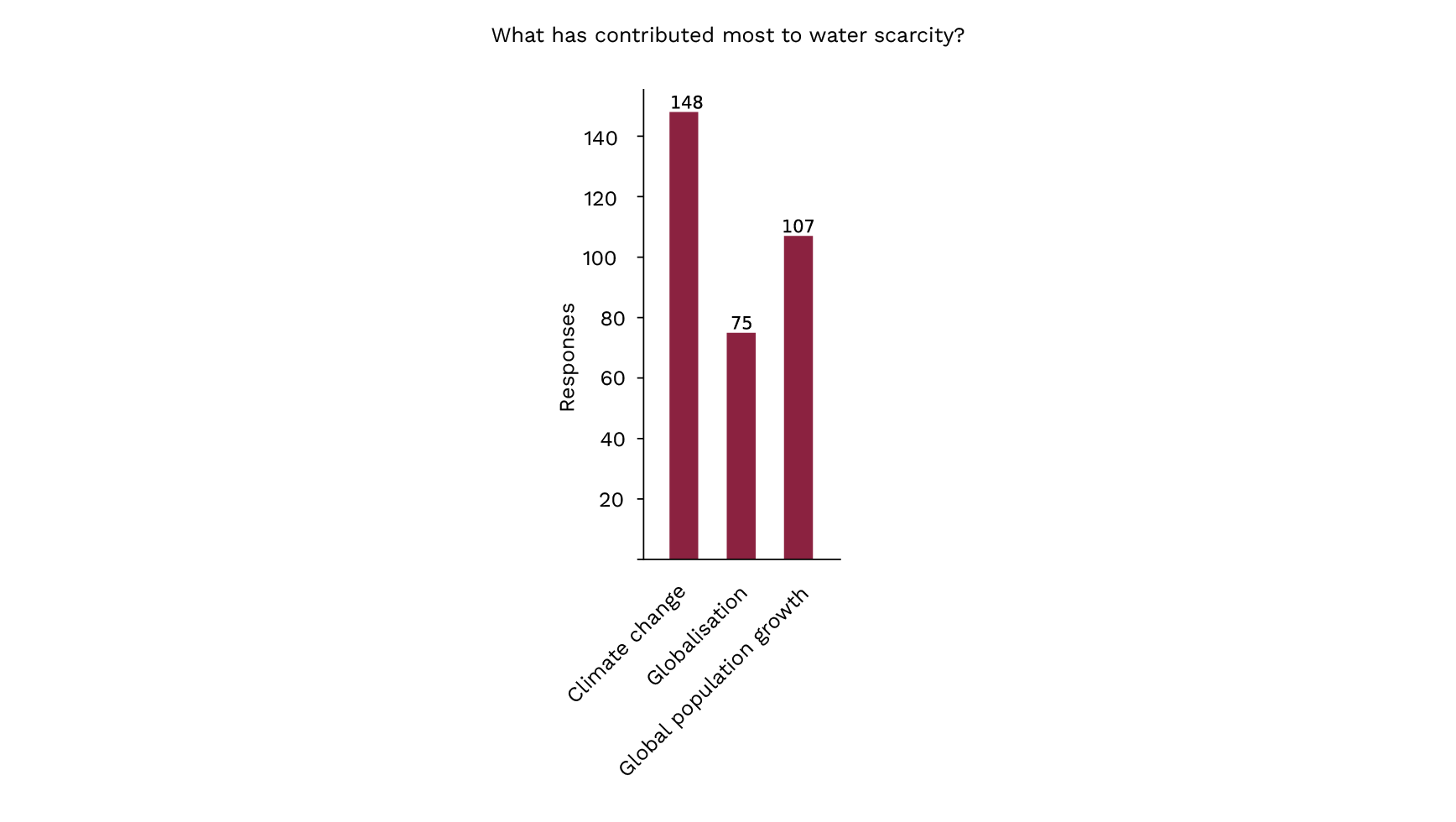
fig.2
As reservoirs dry up and access to water shrinks, water itself becomes a target and the reason for conflict. “According to the Global Peace Index”, she noted, “violence over water resources has surged by 150% just in the past year.”
She talked about the water situation in Gaza, “where Israeli bombs are destroying water and sanitation infrastructures. (...) Israel has been cutting off or limiting water supplies” in a region that already struggled for access to water before the current conflict. Similar trends can be observed in Ukraine and in the Sahel region in Africa, she added.
Catarina de Albuquerque stressed the urgency in establishing the allocation of water uses in accordance with human rights standards. “Currently, between 80% and 90% of water withdrawals are used for irrigation, while only 10% of water is used for direct human consumption”, she said. “We need the courage to demand that our leaders prioritise water and sanitation as human rights.”
This lack of prioritisation is not a problem of technology, capacity or knowledge, according to Catarina de Albuquerque. “It's a failure of political will”, she agreed with Samuel Viana. “And I believe civil society movements can put pressure on governments to do things differently.”
“Water is the foundation of human dignity, of peace and of survival”, concluded Catarina de Albuquerque. “We are at the turning point. We can either let this crisis deepen or seize this moment to build a future that values resilience, justice, human rights, sustainability. And this is not a distant problem. It's here. It's now.”
Watch the full event here.
Text by Ana Gerschenfeld, Health & Science Writer of the Champalimaud Foundation.
